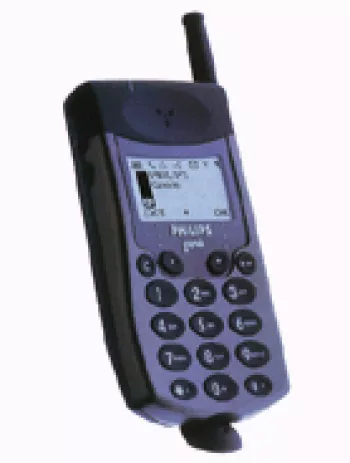
Introduction to Philips S616
The Philips S616, launched in November 2015, is a smartphone designed to cater to the needs of the modern user, offering a balance of essential features, modern technology, and user-friendly experience. Though the device has been discontinued, it remains a point of interest for those exploring the evolution of smartphone technology from the mid-2010s. Below is a detailed exploration of its features and specifications.
Network Capabilities
The Philips S616 supports a comprehensive range of network technologies, ensuring reliable connectivity for users. It is compatible with GSM, HSPA, and LTE technologies, allowing it to operate on several frequency bands. For 2G, it supports GSM 850, 900, 1800, and 1900 MHz bands, applicable for both SIM 1 and SIM 2. In terms of 3G, the device operates on HSDPA 850, 1900, and 2100 MHz bands. The 4G support covers bands 1, 3, 7, 8, 20, 38, 39, 40, and 41, facilitating fast data speeds of HSPA 42.2/5.76 Mbps and LTE Cat4 up to 150/50 Mbps.
Design and Build
The Philips S616 features a sophisticated design with dimensions of 143 x 71.6 x 9.8 mm, making it comfortable to hold and use. Weighing in at 164 grams, it strikes a balance between sturdy build quality and portability. The device accommodates two SIM cards but does not compromise on storage thanks to a dedicated microSDXC slot. Available in a classic black color, the smartphone has a sleek and refined aesthetic.
Display Features
With a 5.5-inch IPS LCD display, the Philips S616 offers vibrant colors and wide viewing angles, a staple of IPS technology. The screen resolution stands at 1080 x 1920 pixels, providing a sharp display with a pixel density of approximately 401 ppi. This delivers clear and detailed visual output, essential for everything from browsing and gaming to streaming videos.
Performance and Platform
At the heart of the Philips S616 is an octa-core processor clocked at 1.3 GHz, which efficiently handles daily tasks and multitasking requirements. Running Android 5.1 (Lollipop), the device guarantees a smooth user experience with access to a variety of apps and services via the Google Play Store. The combination of a robust platform and refined hardware makes it suitable for average smartphone users who seek reliability and functionality.
Memory and Storage
The smartphone comes with 2GB of RAM, which balances performance for regular applications and multitasking. Internally, it provides 16GB of storage, which can be expanded using a microSDXC card, thanks to a dedicated slot, ensuring users can store additional apps, media, and files with ease.
Camera System
The Philips S616 is equipped with a competent camera setup for users interested in capturing everyday moments. The primary camera is a single 13 MP sensor with autofocus, supported by an LED flash for enhanced low-light photography. It can record videos at 1080p@30fps, enabling clear and stable video capture. For selfies and video calls, the device includes a front-facing camera, offering practical functionality for personal photography and connectivity.
Audio and Connectivity
In terms of audio, the Philips S616 includes a loudspeaker and a 3.5mm headphone jack, catering to users who prefer traditional audio equipment. For wireless connectivity, it supports Wi-Fi 802.11 b/g/n and can function as a hotspot. Bluetooth 4.0 with A2DP ensures versatile connectivity with other devices, while GPS provides reliable location services. A microUSB 2.0 port facilitates charging and data transfer.
Sensors and Additional Features
The device is equipped with an array of sensors including an accelerometer, proximity sensor, and compass, enhancing its functionality in various apps and services. Furthermore, it includes an FM radio for users who enjoy traditional broadcast media. However, it lacks NFC support, a feature that was not a primary concern for every user at the time.
Battery Life
The Philips S616 is powered by a Li-Ion 3000 mAh battery, offering a decent amount of power for mixed usage throughout the day. Given the hardware and software combination, this capacity provides an acceptable balance between usage time and recharge frequency.
Conclusion
In conclusion, the Philips S616 is a well-rounded mid-tier smartphone that, during its time, offered a balanced set of features for its price. Designed for those who needed a reliable device for everyday activities, it combined a robust build with adequate performance, clear display, and decent camera capabilities. Although it's been discontinued, understanding such models provides valuable insights into technological progress in the smartphone industry.
Key Features of Philips S616
- Support for multiple network technologies including GSM, HSPA, and LTE.
- Dual SIM capability for greater convenience.
- Large 5.5-inch IPS LCD display with Full HD resolution (1080 x 1920 pixels).
- Excellent screen-to-body ratio of approximately 81.4%.
- Powered by a robust Octa-core 1.3 GHz processor.
- Expandable storage with a dedicated microSDXC slot.
- 13 MP main camera equipped with autofocus and an LED flash for enhanced photography.
- Solid 3000 mAh Li-Ion battery providing reliable performance.
- Includes essential connectivity options such as Wi-Fi, Bluetooth 4.0, and GPS.
- Standard 3.5mm headphone jack and FM radio feature.
Drawbacks of Philips S616
- Discontinued model, leading to potential lack of support and updates.
- Older Android version (Android 5.1 Lollipop), which may not support newer apps and features.
- Limited internal storage of 16GB, potentially insufficient for modern app sizes and media needs.
- No NFC support for contactless payments or data exchanges.
- Basic selfie camera without detailed specifications or video support.
- Uses outdated microUSB 2.0 port instead of the newer USB-C standard.
- Weight of 164 g could be considered heavy compared to more modern smartphones.

View Also
More Phones
All Rights Reserved +14266 Phones © Mobilawy 2025

























